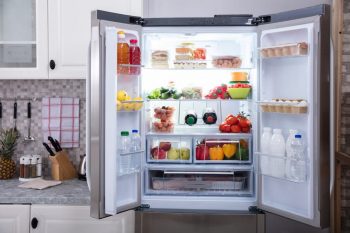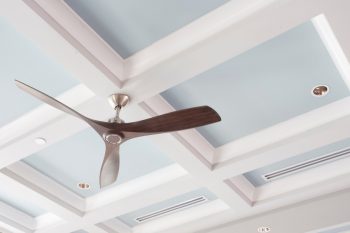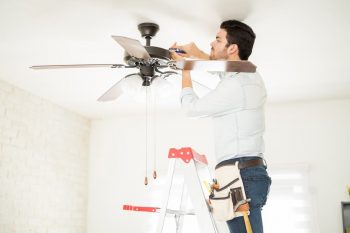
Creating a pedal-powered washing machine may sound like a daunting task, but with the right materials and some elbow grease, you can have your own eco-friendly, energy-efficient machine. Not only does it reduce your carbon footprint, but it also offers a great way to incorporate some exercise into your routine. This comprehensive guide will take you through the process step by step.
Building a pedal-powered washing machine involves using a mechanically sound front-loading washing machine and a stationary exercise bike. You’ll need to create a drive mechanism to connect the bike to the washing machine drum, design a drive selector to switch between wash and spin cycles, and install hoses for water inlet and outlet. Once set up, you can pedal to operate the washing machine, providing an eco-friendly and energy-efficient way to do your laundry.
Materials Needed
Firstly, let’s look at the essential materials required:
- A watertight washing machine drum or a suitable alternative like plastic water barrels.
- A bicycle with a sturdy frame, comfortable seat, handlebars, pedals, and chain.
- A pallet or other materials for constructing a stand to support the washing machine drum.
- A mechanism to transmit mechanical energy from the pedals to the washing machine drum, such as a chain, gears, or a belt.
- A crank system to convert the pedaling motion into the required rotary motion of the washing drum.
- Additional bicycle parts, such as a chain, sprockets, and bearings, to connect the bicycle to the washing machine drum.
- Fasteners like nuts, bolts, and washers to secure the components together.
- Galvanized steel or other suitable materials for constructing the frame of the washing machine.
Step-by-Step Construction Guide
Now that we have the materials, it’s time to start building. Here’s a step-by-step guide:
- Choose a suitable washing machine: Find a mechanically sound front-loading washing machine with a broken electrical system. This will serve as the base for your pedal-powered washing machine.
- Select a stationary exercise bike: You’ll need a stationary exercise bike to provide the pedaling power. Ensure it has a comfortable seat, sturdy frame, handlebars, pedals, and chain.
- Create a drive mechanism: You’ll need to connect the exercise bike to the washing machine drum using a chain or belt. This can be achieved by using a sprocket or a ribbed belt and pulley from a car. You may also need a rear bicycle wheel hub that can take a 6-bolt rotor to fit the pulley onto the hub.
- Design a drive selector: Create a mechanism that allows you to switch between the wash and spin cycles. This can be done using gears or a fixed gear setup that can rotate forwards and backwards.
- Connect the bike to the washing machine: Attach the chain or belt from the exercise bike to the washing machine drum. Ensure the connection is secure and allows for smooth rotation of the drum when pedaling.
- Install hoses for water inlet and outlet: Connect hoses to the washing machine for water supply and drainage. Make sure the hoses are long enough to reach a water source and a drain.
- Test the pedal-powered washing machine: Fill the washing machine with water and detergent, add clothes, and start pedaling. Test both the wash and spin cycles to ensure the machine works effectively.
Remember, this is a general guide. You may need to make adjustments based on the specific washing machine and exercise bike you use.
Functioning and Physics Principles
A pedal-powered washing machine functions similarly to a regular washing machine but uses human energy instead of electricity to operate. The pedaling motion is turned into rotational motion using a drive mechanism, such as a compound gear system, sprocket rotation, or a crank system. This rotational motion causes the drum or agitator to rotate, creating a turbulent flow of detergent around the clothes, which cleans them.
Benefits and Drawbacks
Just like any other machine, a pedal-powered washing machine has its pros and cons. Here are some of them:
Benefits:
- Energy efficiency: It does not require electricity, making it suitable for off-grid living or areas with unreliable power supply.
- Environmentally friendly: It does not contribute to greenhouse gas emissions as it relies on human power.
- Cost-effective: It is generally cheaper than electric washing machines and has low maintenance costs.
- Water conservation: It consumes less water compared to conventional washing machines.
- Health benefits: Pedaling can provide a form of exercise for the user.
Drawbacks:
- Physical effort: It requires manual effort, which may be strenuous for some users.
- Time-consuming: Washing clothes with it may take longer than using an electric washing machine.
- Limited capacity: These machines typically have a smaller capacity compared to regular washing machines, which may require multiple loads for larger families.
- Availability: They may not be readily available in all regions or markets.
Maintenance and Safety
Maintaining your pedal-powered washing machine for long-term use is crucial. Regular cleaning, lubricating moving parts, inspecting for wear and tear, keeping it dry and protected, and maintaining the bicycle components will help ensure its longevity.
As for safety, ensure that the chain is properly enclosed to prevent accidents, choose materials that are resistant to corrosion, ensure the machine is stable during use, and provide clear instructions on how to use the machine safely.
Conclusion
In conclusion, building a pedal-powered washing machine can be a fun and rewarding DIY project. It’s an eco-friendly alternative that offers a great way to conserve energy and water. Although it may require more physical effort and time compared to regular washing machines, the benefits it provides are worth considering. Happy building!
Frequently Asked Questions
Can I use any type of bicycle for this project?
Yes, you can use any type of bicycle as long as it has a sturdy frame, comfortable seat, handlebars, pedals, and a chain. It’s also important that the bicycle is in good working condition to ensure the effectiveness of the pedal-powered washing machine.
How can I prevent rust on my pedal-powered washing machine?
You can prevent rust by using materials that are resistant to corrosion, such as galvanized steel or plastic, for the washing machine’s frame. Also, keeping the machine dry and protected from the elements when not in use can help prevent rust.
How long does it take to wash clothes using a pedal-powered washing machine?
The duration will depend on how fast and how long you pedal. Generally, it may take longer than using an electric washing machine due to the manual effort required.
What type of clothes can I wash in a pedal-powered washing machine?
You can wash any type of clothes that you would normally wash in a regular washing machine. However, keep in mind that these machines typically have a smaller capacity, so you might need to wash larger items, like bedding, separately.
Can children use a pedal-powered washing machine?
While children can help with pedaling, adult supervision is recommended to ensure safety. It’s also important that the chain is properly enclosed to prevent accidents.












